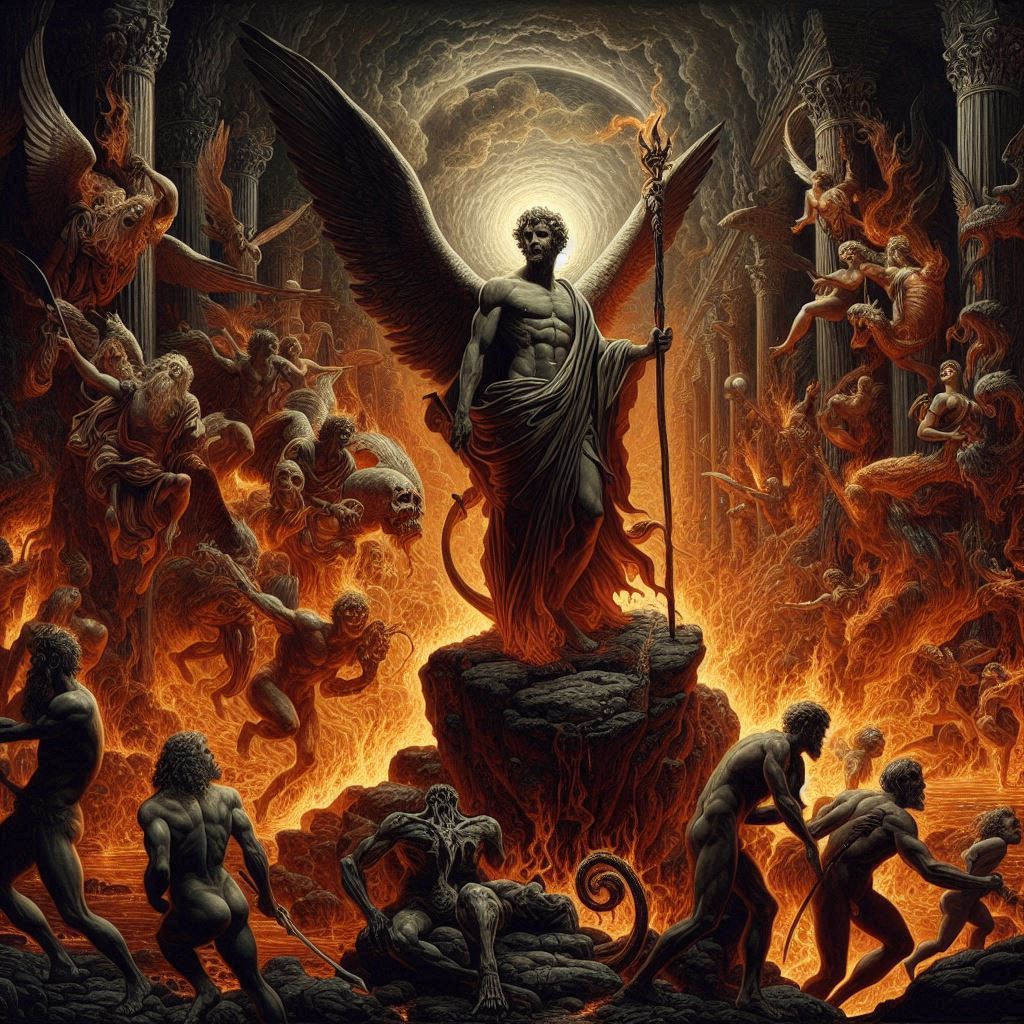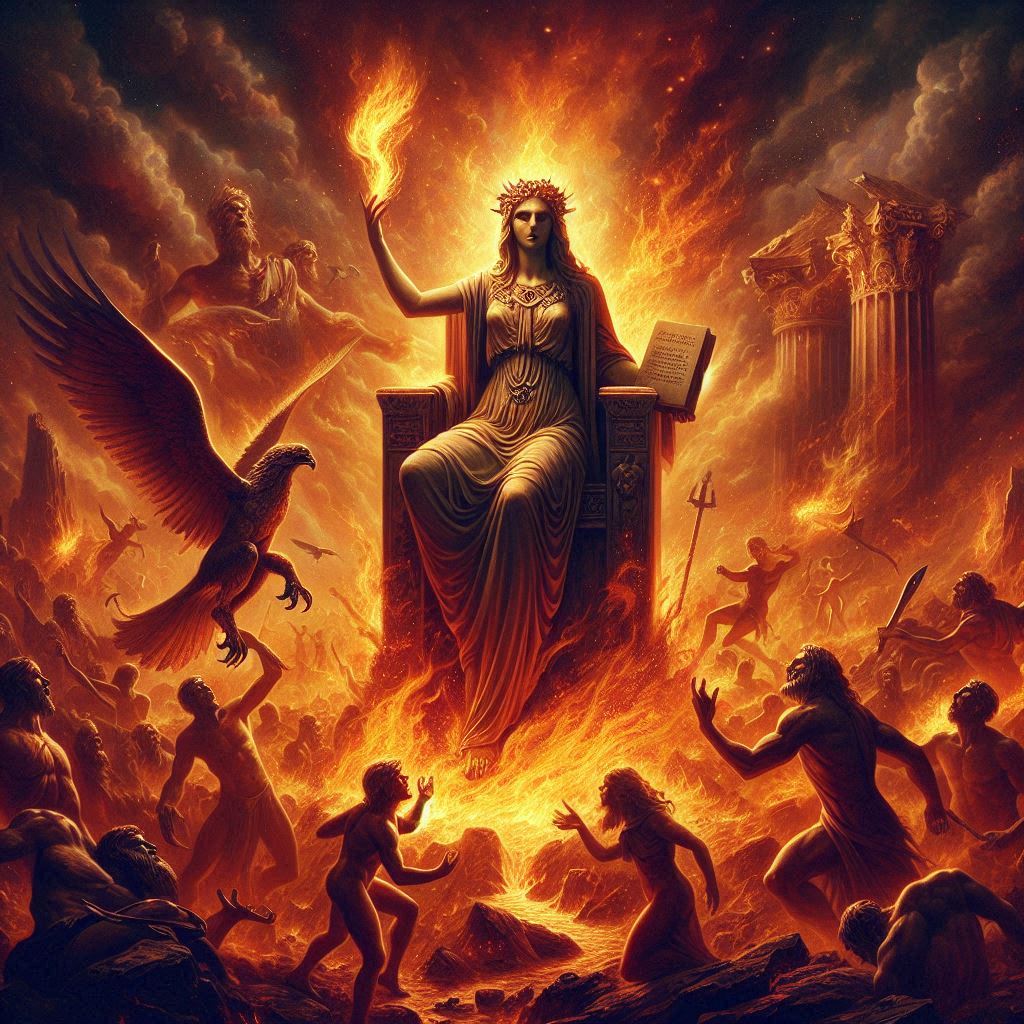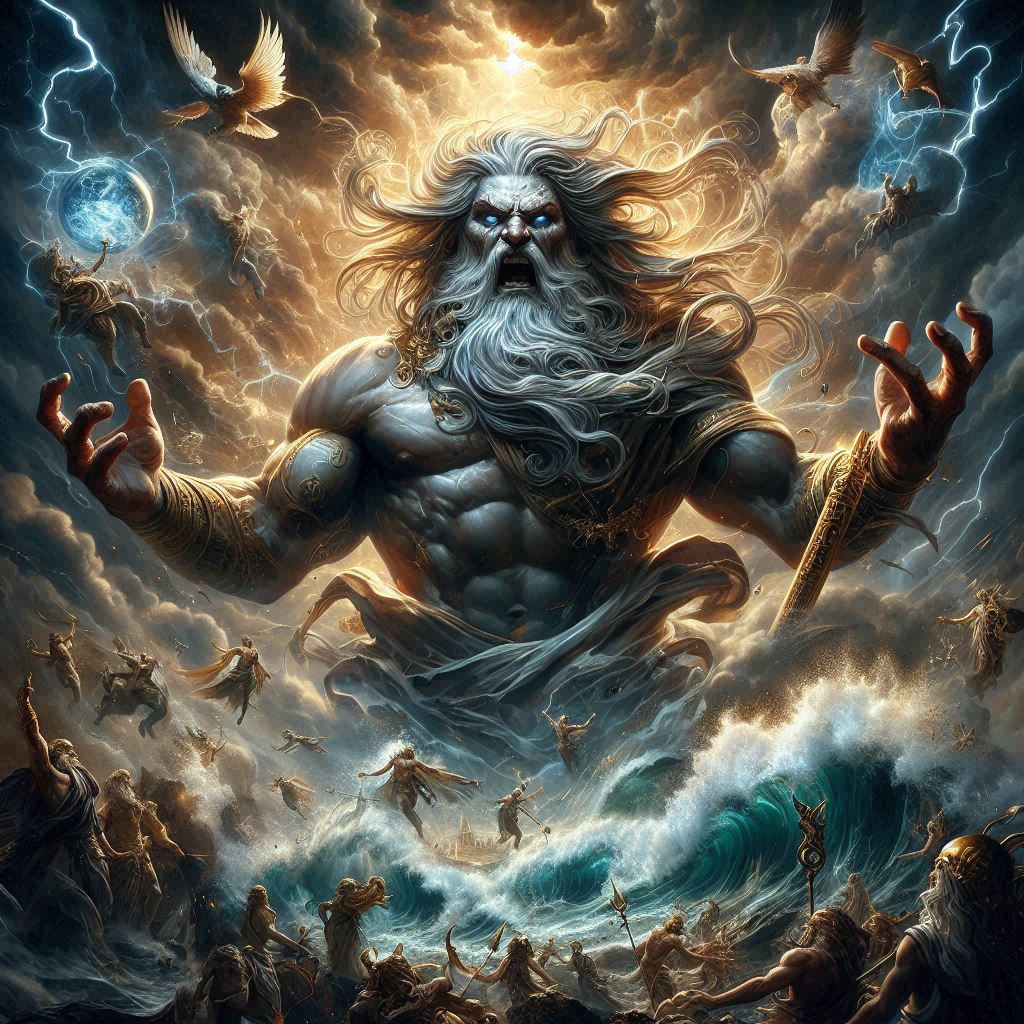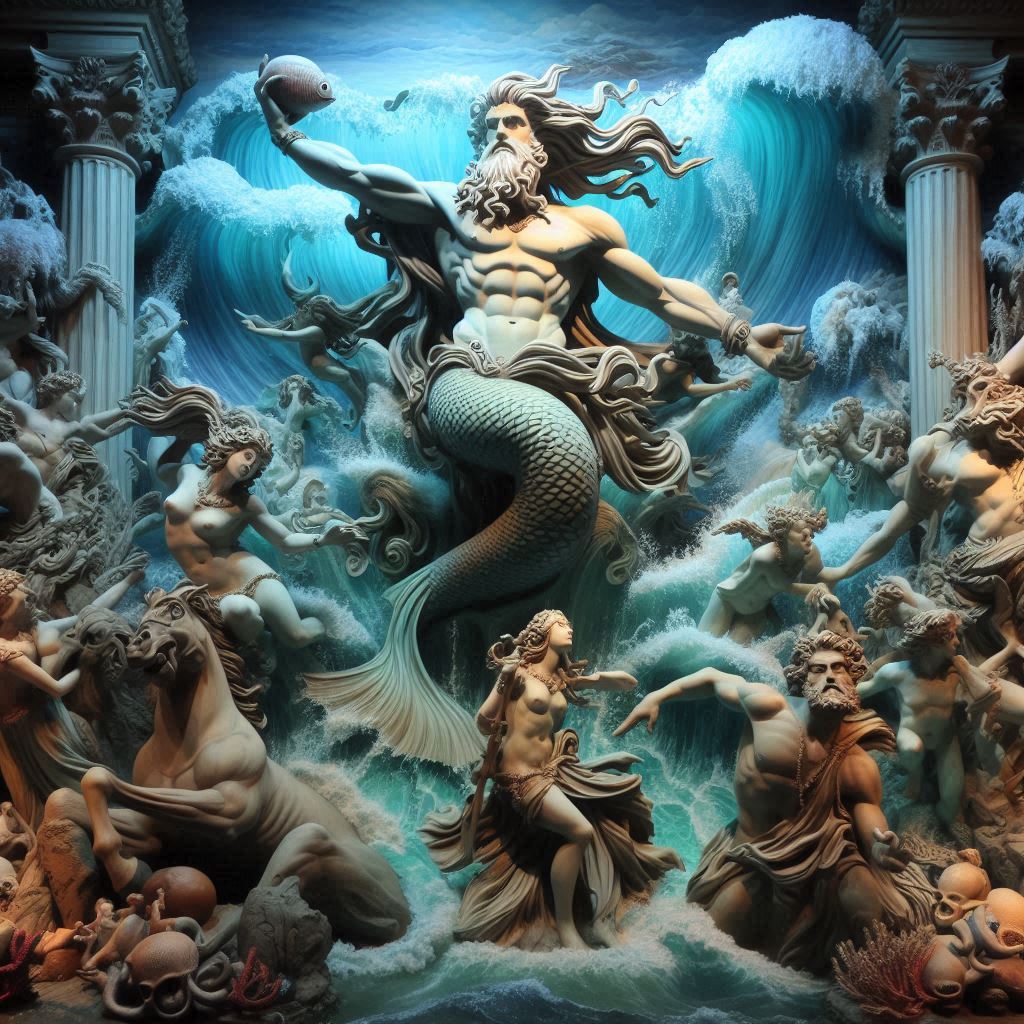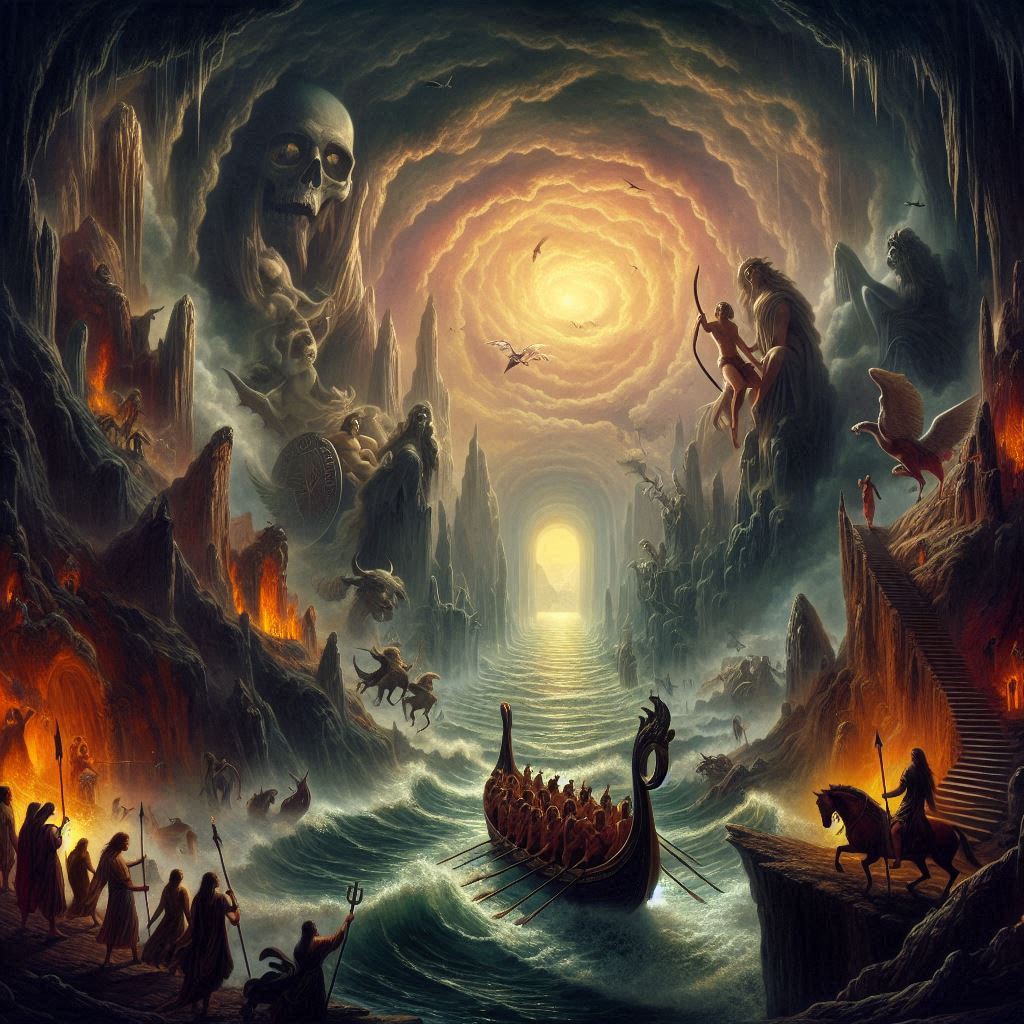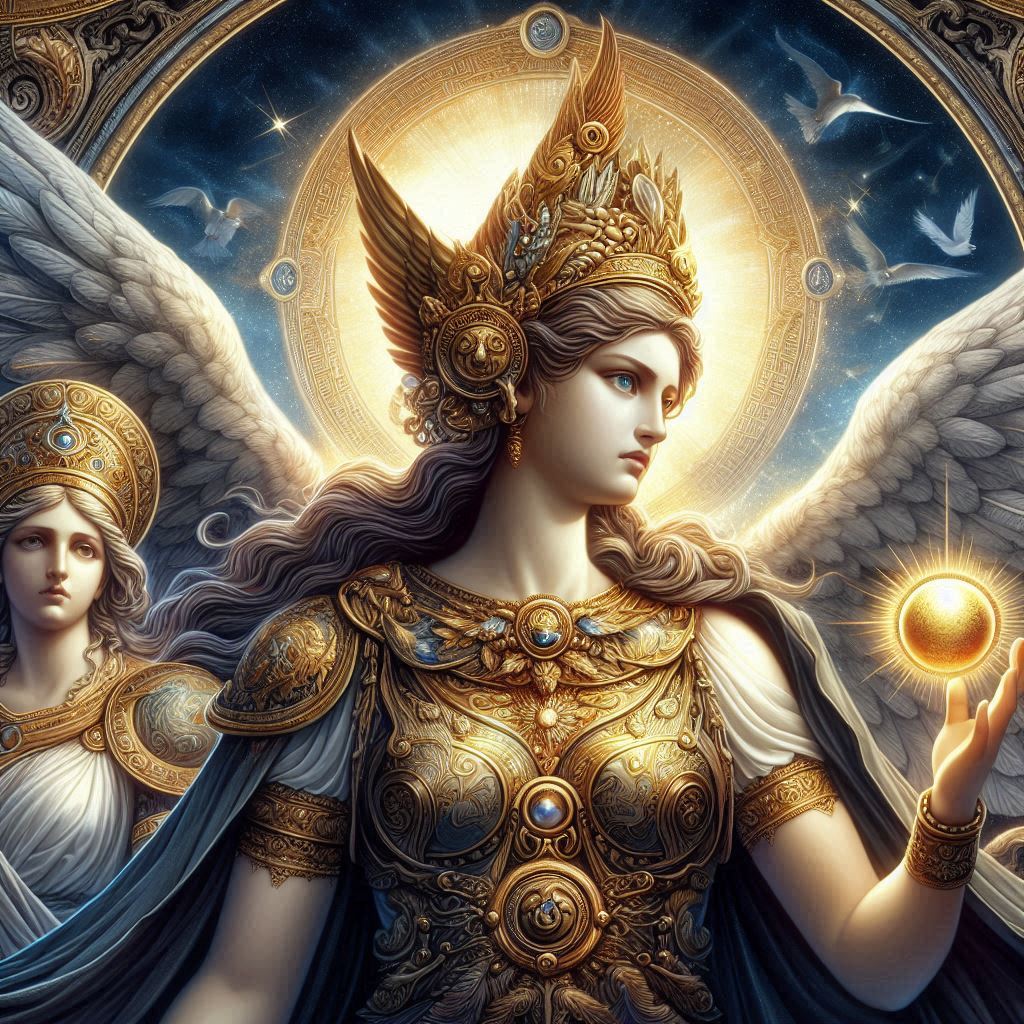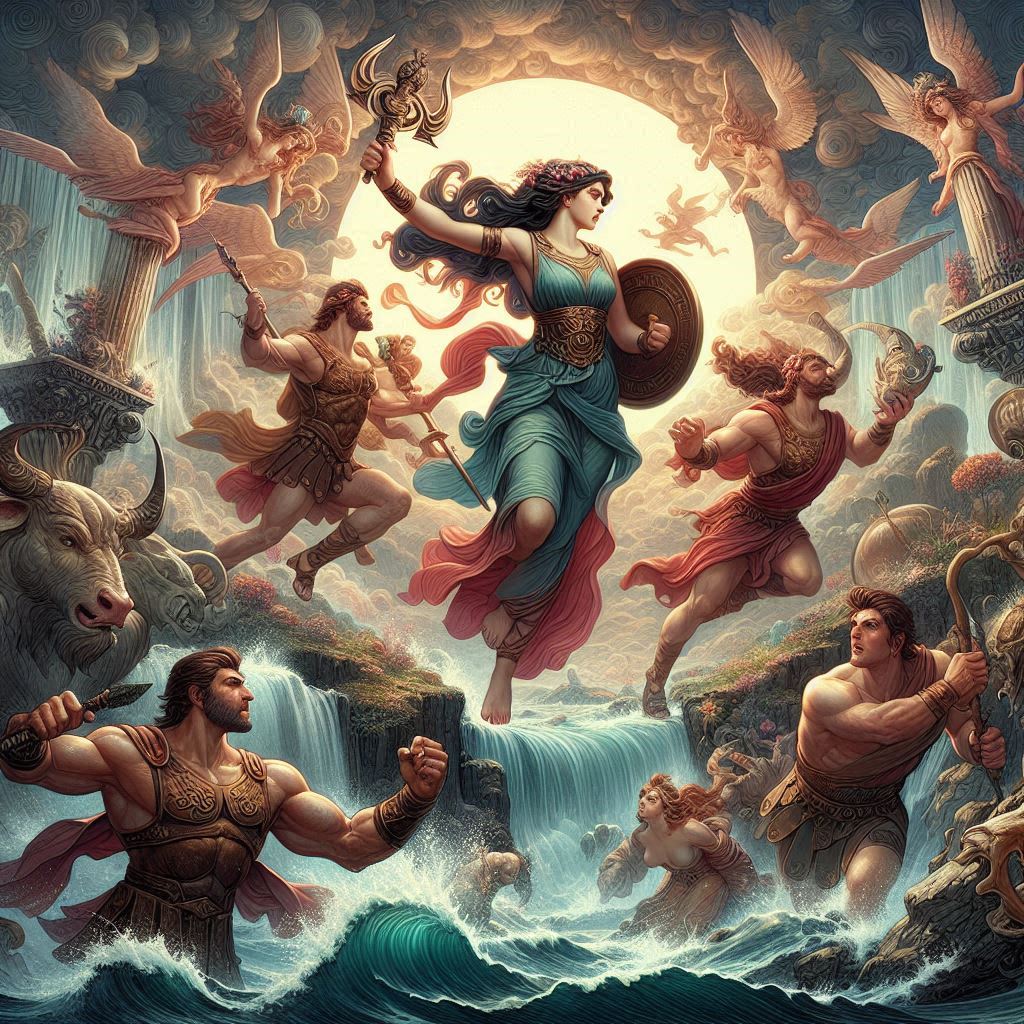Qin Shi Huang was the first Emperor of China, reigning from 221 BCE to 210 BCE. He is best known for unifying China after a period of fragmentation and implementing significant reforms. Qin Shi Huang is also associated with the construction of the Great Wall and the Terracotta Army. His reign marked the beginning of the Qin Dynasty and a pivotal era in Chinese history.
Early Life and Rise to Power
Qin Shi Huang, the first emperor of China, was born in 259 BCE in the turbulent era of the Warring States. Little is known about his early life, but historical accounts suggest that he was born into the royal family of the Qin state, a region known for its military strength and adherence to Legalist philosophy. His given name was Ying Zheng, and he ascended to the throne at the tender age of 13 following the death of his father, King Zhuangxiang.
The circumstances of Qin Shi Huang’s upbringing were influenced by the intense geopolitical rivalry among the seven warring states. During his formative years, the state of Qin was a formidable power, employing legalist principles to centralize authority and maintain a disciplined military. These formative experiences shaped the young ruler’s worldview, providing him with a keen understanding of the ruthlessness required to navigate the political landscape.
Despite his youth, Qin Shi Huang displayed remarkable political acumen from the onset of his reign. Recognizing the need for a unified China, he embarked on a mission to conquer neighboring states and bring them under the dominion of Qin. His military campaigns, led by brilliant generals such as Bai Qi and Wang Jian, were characterized by strategic brilliance and a determination to achieve victory at any cost.
One of the most notable military achievements during Qin Shi Huang’s early reign was the conquest of the state of Zhao. This victory, which included the infamous Battle of Changping, solidified Qin’s dominance and paved the way for the eventual unification of China. The emperor’s reliance on Legalist principles, with a focus on strict laws and severe punishments, contributed to the effectiveness of his military campaigns.
By 221 BCE, after years of conquest and strategic maneuvering, Qin Shi Huang achieved his grand vision—the unification of China. Declaring himself the first emperor of the Qin Dynasty, he abolished the feudal system and established a centralized government. This marked the end of the Warring States period and the beginning of a new era in Chinese history.
The centralization of power under Qin Shi Huang was not limited to the political realm; it extended to his vision of a unified cultural and economic landscape. One of his major contributions was the standardization of weights, measures, and currency. This ambitious effort aimed to streamline administrative processes, facilitate trade, and foster a sense of unity among the diverse regions now under Qin’s rule.
However, the emperor’s pursuit of unity went beyond administrative measures. Qin Shi Huang envisioned a physical manifestation of his power and authority, leading to the initiation of massive infrastructure projects. The construction of the Great Wall of China, a colossal undertaking intended to fortify the northern borders and protect against invasions, stands as a testament to the emperor’s determination to leave an indelible mark on the landscape.
Qin Shi Huang’s rise to power and unification of China were not without challenges. The sheer scale of his military campaigns, coupled with the logistical demands of governance, placed an immense strain on the state. High taxes and forced labor fueled discontent among the populace, creating an undercurrent of resentment that would eventually contribute to the downfall of the Qin Dynasty.
The emperor’s quest for immortality is another intriguing aspect of his early reign. Driven by a deep fear of death, Qin Shi Huang sought the mythical elixir of life. The construction of his elaborate mausoleum, accompanied by the creation of the Terracotta Army, reflects the emperor’s belief in an afterlife where he could continue his rule.
Unification of China
Qin Shi Huang’s unification of China, culminating in the establishment of the Qin Dynasty in 221 BCE, represents a pivotal moment in the nation’s history. This transformative process involved not only military conquests but also profound political, cultural, and administrative changes that laid the foundation for imperial rule in China.
The Warring States period, marked by incessant conflict among regional powers, set the stage for Qin Shi Huang’s ambitious vision of a unified China. Recognizing the need for political centralization, he embarked on a series of military campaigns to conquer rival states and bring them under the dominion of Qin. His generals, notably Bai Qi and Wang Jian, executed strategic maneuvers that showcased both tactical brilliance and a ruthless determination to achieve victory.
The conquest of the state of Qi, a powerful adversary, was a defining moment in Qin Shi Huang’s unification efforts. The relentless pursuit of territorial expansion and the dismantling of traditional feudal structures contributed to the gradual consolidation of power under the Qin banner. By 221 BCE, after years of military campaigns, Qin Shi Huang declared himself the first emperor of China, signaling the end of the Warring States period.
The establishment of the Qin Dynasty marked not only a political shift but also a radical transformation of China’s administrative and cultural landscape. Qin Shi Huang sought to create a centralized government that would wield unprecedented authority over the vast territories under his rule. Abolishing the feudal system, he implemented a system of prefectures and counties, each governed by appointed officials loyal to the emperor. This administrative overhaul aimed to diminish the power of regional lords and strengthen the emperor’s control.
One of the most enduring symbols of Qin Shi Huang’s unification efforts is the Great Wall of China. While earlier walls existed, the emperor ordered the construction of a monumental barrier to fortify the northern borders and protect against invasions from nomadic tribes. This colossal project, involving the labor of millions, not only showcased the emperor’s determination to defend his realm but also left a physical legacy that continues to define China’s landscape.
The standardization initiatives undertaken by Qin Shi Huang further emphasized his commitment to creating a unified empire. Standardizing weights, measures, and currency not only streamlined administrative processes but also facilitated trade and communication across diverse regions. This uniformity contributed to a sense of cohesion among the people, fostering a nascent Chinese identity that transcended regional differences.
Qin Shi Huang’s unification efforts extended beyond the political and administrative spheres; they encompassed a cultural revolution aimed at consolidating the emperor’s ideological control. The burning of books and burying of scholars, a controversial aspect of his rule, sought to eliminate dissenting ideologies and establish a state-sanctioned orthodoxy. While this draconian measure aimed to solidify the emperor’s authority, it sparked criticism and resentment among the intellectual class.
The emperor’s quest for immortality is a fascinating dimension of his unification era. Driven by a fear of mortality, Qin Shi Huang engaged in a relentless pursuit of the mythical elixir of life. The construction of his grand mausoleum, accompanied by the creation of the Terracotta Army, reflects not only the emperor’s desire for eternal rule but also a belief in an afterlife where he could continue to exert influence.
Despite the grandeur of his achievements, Qin Shi Huang’s unification era was not without challenges. The ambitious projects, including the Great Wall and the mausoleum, placed immense strain on the economy and the population. High taxes and forced labor fueled discontent, creating an undercurrent of resentment that would eventually contribute to the downfall of the Qin Dynasty.
The emperor’s death in 210 BCE marked the beginning of the end for the Qin Dynasty. The harsh policies, coupled with the economic strain and social unrest, led to widespread uprisings. Liu Bang, a former Qin general, emerged as a key figure in the rebellion that ultimately toppled the Qin Dynasty and gave rise to the Han Dynasty.
Legalist Policies
Qin Shi Huang’s reign as the first emperor of China was characterized by the vigorous implementation of Legalist policies, a school of thought that advocated for strict laws, centralized authority, and harsh punishments to maintain social order and strengthen the state. Emerging during a time of political turmoil and internal strife, Legalism provided the ideological framework that Qin Shi Huang employed to consolidate power and realize his vision of a unified China.
Legalism, as a political philosophy, traced its origins to the tumultuous Warring States period, during which competing states sought ways to achieve dominance. Legalist thinkers such as Han Feizi and Shang Yang emphasized the need for a strong, centralized state governed by clear and unyielding laws. Qin Shi Huang, influenced by these ideas, embraced Legalism as a means to ensure stability, control, and longevity for his newly unified empire.
One of the fundamental tenets of Legalism was the belief in the inherent selfishness and moral depravity of human nature. Legalists argued that individuals, left to their own devices, would prioritize their own interests over those of the state, leading to chaos and disorder. To counteract this, Qin Shi Huang implemented a system of strict laws and regulations designed to suppress individual desires in favor of the collective good.
The emperor’s legalist policies extended to the realm of governance. To eradicate potential sources of dissent and opposition, Qin Shi Huang abolished the feudal system that had characterized China for centuries. Instead, he established a centralized bureaucratic structure with officials appointed based on merit rather than hereditary privilege. This administrative overhaul aimed to weaken the power of regional lords and create a system of governance more loyal to the emperor.
Harsh punishments and strict laws were hallmarks of Qin Shi Huang’s legalist approach. The principle of collective responsibility held that entire families could be punished for the actions of a single member, creating a climate of fear and discouraging dissent. This approach, while effective in suppressing opposition, also drew criticism for its severity and disregard for individual rights.
The infamous Burning of Books and Burying of Scholars, one of the most controversial aspects of Qin Shi Huang’s rule, exemplified the extreme measures taken to enforce ideological conformity. Recognizing the potential threat posed by dissenting intellectual ideas, the emperor ordered the destruction of books and the execution of scholars who did not conform to the state-sanctioned ideology. This brutal campaign aimed to eliminate alternative viewpoints and solidify the emperor’s control over the narrative.
The standardization of weights, measures, and currency was another manifestation of Qin Shi Huang’s legalist policies. By imposing a uniform system across the newly unified empire, the emperor sought to enhance administrative efficiency, facilitate trade, and foster a sense of unity. This standardization contributed to the centralization of economic power under the state’s watchful eye.
Qin Shi Huang’s legalist approach was also evident in his military campaigns. The use of collective responsibility extended to the families of soldiers, ensuring loyalty and discipline within the ranks. Generals who achieved success were rewarded lavishly, while failure often resulted in severe punishment. This system of rewards and punishments, rooted in legalist principles, contributed to the effectiveness of Qin’s military forces.
While Qin Shi Huang’s legalist policies were instrumental in achieving political centralization and unification, they also incurred significant costs. The harsh methods employed, including mass executions and brutal punishments, generated resentment among the population. The enforcement of strict laws and the suppression of dissent stifled intellectual and cultural expression, leading to a climate of fear and conformity.
The economic burden imposed by ambitious projects, such as the construction of the Great Wall and the emperor’s mausoleum, fueled discontent. High taxes and forced labor strained the economy, contributing to the dissatisfaction that would eventually lead to the downfall of the Qin Dynasty. The severity of legalist policies, while effective in the short term, sowed the seeds of rebellion and resistance.
Construction of the Great Wall
Qin Shi Huang, the first emperor of China, left an indelible mark on history through the construction of the Great Wall—an extraordinary feat that has endured for centuries as a symbol of China’s strength, resilience, and imperial might. This colossal undertaking, initiated during the early years of the Qin Dynasty (221–206 BCE), was not only a monumental defensive structure but also a manifestation of the emperor’s strategic vision and determination to protect the newly unified empire.
The origins of the Great Wall can be traced to the geopolitical landscape of ancient China during the Warring States period. Qin Shi Huang, having successfully unified the various states under his rule, recognized the vulnerability of the northern borders to raids by nomadic tribes, particularly the Xiongnu. In response to this threat, the emperor envisioned a grand defensive barrier that would serve as a bulwark against invasions and secure the northern frontier of the empire.
The construction of the Great Wall was a vast and ambitious project, reflecting the emperor’s commitment to fortifying his realm. Qin Shi Huang appointed General Meng Tian to oversee the construction, and the project mobilized a massive workforce comprising soldiers, peasants, and prisoners of war. The strategic importance of the wall was evident from the outset, as it aimed not only to repel invasions but also to establish a visible and formidable symbol of imperial authority.
The sheer scale of the Great Wall’s construction was unprecedented. Stretching over thousands of miles, the wall traversed diverse terrains, including mountains, deserts, and plateaus. It comprised various elements, including walls of different heights and widths, watchtowers, garrison stations, and other defensive structures. The materials used in construction varied depending on the region and included earth, wood, bricks, and stone.
The strategic design of the Great Wall aimed to impede and deter potential invaders. Watchtowers, strategically positioned along the wall, served as observation points to detect approaching threats. Beacon towers facilitated long-distance communication, allowing rapid response to potential attacks. The wall itself featured parapets and crenellations, providing defenders with advantageous positions to repel assaults. Natural barriers, such as rivers and cliffs, were incorporated into the defensive strategy, enhancing the overall effectiveness of the wall.
The labor force involved in the construction of the Great Wall was vast and diverse. Soldiers stationed along the wall, peasants drafted for public projects, and prisoners of war all contributed to the colossal effort. Historical records suggest that the conditions for these laborers were exceedingly challenging, with many facing extreme weather, physical exhaustion, and high mortality rates. The construction of the Great Wall became a symbol of the sacrifices required to safeguard the empire.
The economic and symbolic significance of the Great Wall extended beyond its military function. Garrison stations along the wall became hubs for trade and cultural exchange, forming part of the ancient Silk Road routes. The wall, as a physical manifestation of imperial might, served to deter potential adversaries and reinforce the emperor’s authority over the vast territories under his rule.
Qin Shi Huang’s role in the construction of the Great Wall was not merely that of an overseer; it was a reflection of his visionary leadership and determination to leave a lasting legacy. The emperor’s strategic foresight in recognizing the need for a fortified northern border demonstrated his commitment to the security and stability of the newly unified empire. The Great Wall became a tangible representation of his imperial ambitions and a testament to the resourcefulness and resilience of the Chinese people during this monumental undertaking.
While the Great Wall effectively served its intended defensive purpose, it also symbolized the centralized authority of the Qin Dynasty. The wall’s construction required meticulous planning, organization, and coordination—an embodiment of the Legalist principles that Qin Shi Huang embraced. The emperor’s pursuit of a unified and fortified empire, as exemplified by the Great Wall, reflected not only the military challenges of his time but also his determination to establish a lasting legacy that would endure through the annals of history.
Terracotta Army
The Terracotta Army, a breathtaking archaeological marvel discovered near the city of Xi’an in China, is a testament to the grandiosity and vision of Qin Shi Huang, the First Emperor of China. Unearthed in 1974, this vast army of life-sized terracotta soldiers, horses, and chariots was designed to accompany Qin Shi Huang in the afterlife and stands as one of the most remarkable archaeological finds in history.
The origins of the Terracotta Army can be traced back to the early years of Qin Shi Huang’s reign during the third century BCE. Driven by a deep-seated belief in the afterlife and a desire for eternal protection, the emperor conceived the idea of an elaborate burial complex that would mirror the grandeur of his rule in the earthly realm. The Terracotta Army was intended to serve as his immortal guard in the afterlife.
Construction of the Terracotta Army began around 246 BCE, concurrent with the emperor’s ambitious efforts to unify the Warring States into a centralized and formidable empire. The sheer scale of the project was unparalleled, involving thousands of skilled artisans, laborers, and craftsmen. The meticulous attention to detail and the lifelike precision of each terracotta figure showcased the advanced artistic and technological achievements of the Qin Dynasty.
The Terracotta Army was strategically placed in three massive pits near the emperor’s mausoleum, located about 1.5 kilometers east of the Qin capital, Chang’an (modern-day Xi’an). The pits were arranged in a formation resembling ancient Chinese military tactics, reflecting the emperor’s commitment to precision and military order, even in the afterlife.
Pit 1, the largest and most renowned of the three pits, contains an estimated 6,000 life-sized infantrymen, arranged in long corridors and battle formations. The soldiers were armed with real weapons—bronze swords, crossbows, and spears—a testament to the emperor’s desire for a well-equipped army in the afterworld. Each soldier is unique, with distinct facial features and hairstyles, suggesting individualized craftsmanship.
Pit 2 is home to a mix of infantry, cavalry, and chariots, providing a more diverse representation of the ancient Chinese military. The cavalry and charioteers, positioned on the flanks, demonstrate the emperor’s emphasis on tactical flexibility and mobility. The level of detail in the cavalry figures further underscores the mastery of Qin Dynasty artisans.
Pit 3, the smallest of the three, contains high-ranking officers and commanders. These figures are distinguished by their elaborate headdresses, armor, and detailed facial features. The presence of a command post with military officers suggests a hierarchical structure that mirrored the emperor’s earthly military command.
The process of creating the Terracotta Army was a meticulous and highly organized undertaking. Artisans crafted each figure using clay, employing a combination of molds for standard features and hand modeling for individualized details. After sculpting, the figures were left to dry before being fired in kilns. The use of a two-step firing process ensured the durability of the terracotta figures.
Once fired, the terracotta soldiers were painted with vibrant colors to enhance their lifelike appearance. However, exposure to the air and elements over the centuries has led to the fading of these colors, leaving the figures with their characteristic earthen hue. The level of sophistication in the crafting process attests to the advanced artistic and technological capabilities of the Qin Dynasty.
The purpose of the Terracotta Army was intricately tied to the emperor’s beliefs about the afterlife. Qin Shi Huang, influenced by Daoist and Confucian ideas, sought to replicate the structures and arrangements of the earthly realm in his burial complex. The Terracotta Army, with its military precision and lifelike representations, was intended to serve the emperor in the afterlife, defending him against potential threats and ensuring a smooth transition to the next realm.
Qin Shi Huang’s mausoleum, situated beneath a massive earthen mound, remains largely unexplored due to concerns about preserving the site and the potential presence of mercury rivers, as described in historical accounts. The Terracotta Army, however, has become a global symbol of ancient Chinese civilization and a UNESCO World Heritage site.
The discovery of the Terracotta Army in 1974 by local farmers digging a well brought international attention to this extraordinary archaeological site. Excavations have continued over the decades, revealing new insights into the craftsmanship, organization, and symbolism behind this ancient army. The site attracts millions of visitors annually, offering a glimpse into the cultural, military, and artistic achievements of the Qin Dynasty.
Cultural Standardization
Qin Shi Huang’s rule was characterized not only by military conquests and monumental construction projects but also by a profound desire for cultural standardization. The emperor, driven by a vision of a unified and harmonious empire, implemented a series of reforms aimed at unifying various aspects of Chinese culture, from language and writing to weights and measures. This cultural standardization played a crucial role in solidifying the identity of the newly unified China under the Qin Dynasty.
One of Qin Shi Huang’s most notable contributions to cultural standardization was the standardization of the Chinese script. The Warring States period had left China with a plethora of written scripts, each associated with different regions and states. Recognizing the need for a unified written language to promote communication and governance, Qin Shi Huang initiated the standardization of Chinese characters.
Under the direction of the prime minister Li Si, scholars were tasked with creating a standardized script based on the prevalent writing style of the Qin state. The result was the Qin script, which served as the foundation for the later development of the more recognizable seal script. This standardization not only facilitated communication within the empire but also contributed to a sense of cultural unity that transcended regional differences.
In addition to script standardization, Qin Shi Huang implemented measures to standardize weights and measures. Variations in weights and measures had hindered trade and communication among the states during the Warring States period. To address this, the emperor ordered the standardization of weights and measures across the empire, ensuring consistency in trade and administrative practices. This pragmatic approach aimed to streamline economic activities and promote efficiency within the newly unified state.
The standardization of currency was another crucial aspect of Qin Shi Huang’s cultural reforms. Before his reign, different states had their own forms of currency, leading to confusion and inefficiencies in trade. Qin Shi Huang introduced a standardized currency system, unifying the various regional forms of currency into a single, centrally regulated currency. This not only facilitated economic transactions but also reinforced the emperor’s control over economic activities.
The emperor’s efforts in cultural standardization extended beyond language and economy to include legal and administrative reforms. Qin Shi Huang sought to establish a comprehensive legal code that would apply uniformly across the empire. The Legalist philosophy, which emphasized strict adherence to laws and harsh punishments for offenders, influenced the emperor’s approach to legal standardization. The resulting legal code was designed to maintain social order, ensure obedience to the state, and discourage dissent.
To enforce these legal standards, Qin Shi Huang established a bureaucratic system that replaced the feudal system prevalent during the Warring States period. The centralized administrative structure allowed for greater control over the empire, with officials appointed by the emperor overseeing various aspects of governance. This administrative standardization aimed to eliminate local autonomy and ensure the emperor’s direct influence over all facets of the state.
However, the emperor’s strict adherence to Legalist principles and the harsh punishments prescribed in the legal code generated resentment among the populace. The infamous “burning of books and burying of scholars” episode, where texts deemed subversive or contrary to state ideology were destroyed, exemplified Qin Shi Huang’s uncompromising approach to cultural and intellectual standardization. This draconian act aimed to eliminate opposing ideologies and establish a monolithic state ideology centered on Legalism.
Despite the controversy surrounding Qin Shi Huang’s methods, the cultural standardization initiatives had a lasting impact on China’s identity. The linguistic, economic, legal, and administrative reforms laid the groundwork for a more cohesive and integrated empire. The standardization of the Chinese script, weights and measures, currency, and legal codes contributed to a sense of cultural unity that persisted long after the Qin Dynasty.
Moreover, Qin Shi Huang’s influence extended to architectural standardization. The emperor implemented a standardized system of measurements for construction projects, ensuring consistency and efficiency in the building process. This standardization is evident in the construction of the Great Wall and the massive mausoleum complex, including the Terracotta Army site. The use of uniform measurements and design principles in these monumental projects reflects the emperor’s commitment to imposing a standardized aesthetic across his empire.
While Qin Shi Huang’s reign was relatively short-lived, lasting from 221 BCE until his death in 210 BCE, the impact of his cultural standardization efforts endured. The subsequent Han Dynasty, which followed the Qin Dynasty, built upon many of the administrative and cultural foundations laid by Qin Shi Huang. The standardization of the Chinese script, legal codes, and administrative practices became integral components of China’s imperial governance, contributing to the longevity and continuity of the Chinese imperial system.
Quest for Immortality
Qin Shi Huang, the First Emperor of China, is renowned not only for his military conquests, cultural standardization, and the construction of monumental projects like the Great Wall and the Terracotta Army but also for his fervent quest for immortality. The emperor’s obsession with achieving eternal life stemmed from a deep fear of mortality and a desire to secure his legacy beyond the confines of earthly existence.
The quest for immortality during the ancient Chinese period was deeply intertwined with Daoist and alchemical beliefs. The Daoist philosophy emphasized harmony with the natural order and the pursuit of longevity through various practices, including meditation, alchemy, and herbal medicine. Qin Shi Huang, influenced by Daoist ideas, sought the elixir of life—a substance believed to grant immortality.
The emperor’s pursuit of immortality was not merely a personal obsession but a political imperative. The idea of an immortal ruler, possessing eternal wisdom and governance, aligned with the emperor’s vision of a perpetually unified and powerful empire. Qin Shi Huang’s fear of the cyclical rise and fall of dynasties, as witnessed during the Warring States period, fueled his quest for a solution that transcended mortality.
To realize his quest, Qin Shi Huang assembled a team of alchemists, scholars, and experts in various fields. The alchemists, in particular, played a central role in the emperor’s pursuit of the elixir of life. Alchemy during this period was a blend of mystical and practical elements, involving the search for transformative substances that could confer immortality.
The emperor’s court became a center for alchemical experiments, with alchemists exploring a range of materials, minerals, and herbal concoctions in their quest for the elusive elixir. Some accounts suggest that mercury, believed to have mystical properties, played a significant role in these experiments. However, the lack of scientific understanding at the time and the hazardous nature of the substances used likely contributed to unintended health consequences.
The quest for immortality reached its height during the later years of Qin Shi Huang’s reign. Desperate to find the elixir that would grant him eternal life, the emperor dispatched expeditions to various corners of his empire in search of legendary herbs and alchemical secrets. The vast resources of the empire were mobilized to support these endeavors, showcasing the emperor’s unwavering commitment to his quest.
One of the most infamous episodes associated with Qin Shi Huang’s quest for immortality is the burning of books and burying of scholars. Fearing dissent and the spread of alternative philosophies that questioned his rule, the emperor ordered the destruction of texts deemed incompatible with his ideology. This anti-intellectual purge targeted Daoist writings, which often contained mystical and alchemical teachings. The suppression of intellectual discourse, while reflecting the emperor’s authoritarian rule, also stifled the diversity of thought that might have tempered his relentless pursuit.
The emperor’s quest for immortality ultimately became entwined with paranoia and fear. Historical accounts suggest that the use of mercury in the alchemical experiments may have contributed to the emperor’s declining health. As his health deteriorated, so did his mental state, leading to increasingly erratic behavior and purges of perceived threats to his rule.
In 210 BCE, Qin Shi Huang died under mysterious circumstances. Some historical accounts suggest that he may have ingested mercury pills, mistakenly believing they held the key to immortality. While the exact cause of his death remains uncertain, the irony of the emperor’s demise in his quest for eternal life is a poignant reflection of the complexities surrounding his rule.
The death of Qin Shi Huang set the stage for a tumultuous transition of power and the eventual collapse of the Qin Dynasty. The relentless pursuit of immortality had not only consumed the emperor personally but also left a lasting impact on the political stability of the empire. The subsequent Han Dynasty, which followed the Qin, sought to distance itself from the excesses of Qin Shi Huang’s rule while incorporating some of the administrative and cultural foundations he had laid.
The quest for immortality, despite its failure, left an indelible mark on Chinese history and culture. The symbolism of the emperor’s pursuit, coupled with the architectural marvels and cultural standardization achieved during his reign, shaped the narrative of the Qin Dynasty. The Terracotta Army, standing as eternal guardians in the emperor’s afterlife, reflects the legacy of Qin Shi Huang’s grand vision and the profound impact of his quest for immortality on Chinese historical consciousness.
Downfall and Successors
The downfall of Qin Shi Huang’s Qin Dynasty marked the end of a short but transformative era in Chinese history. Despite the emperor’s remarkable achievements in unifying China, standardizing culture, and constructing monumental projects, his reign was marred by authoritarian excesses, harsh policies, and a relentless pursuit of immortality. The transition of power following Qin Shi Huang’s death in 210 BCE was marked by internal strife, uprisings, and the rise of the Han Dynasty, ushering in a new era in Chinese governance.
Qin Shi Huang’s death triggered a succession crisis, and his second son, Qin Er Shi, ascended to the throne. However, the new emperor faced immediate challenges, including internal dissent and external threats. The harsh policies and heavy-handed rule of Qin Shi Huang had alienated many, leading to widespread resentment among the populace. Additionally, the ambitious construction projects, such as the Great Wall and the mausoleum complex, had imposed significant economic and human costs on the empire.
Rebellions erupted in various parts of the empire, with disgruntled peasants and former Qin officials joining forces against the ruling dynasty. The chaos that ensued undermined the stability of the empire, hastening its decline. The reputation of the Qin Dynasty, tarnished by the emperor’s authoritarian rule and the failed quest for immortality, further fueled discontent among the people.
The most notable rebellion was led by Chen Sheng and Wu Guang, two military officers who rose against the oppressive rule of the Qin Dynasty. Their rebellion, known as the Dazexiang Uprising, marked the beginning of the end for the Qin Dynasty. The rebellion gained momentum as various factions joined the cause, and it eventually contributed to the fall of the Qin capital, Xianyang, in 207 BCE.
Faced with mounting internal unrest and external threats, the last Qin emperor, Qin Er Shi, took his own life in 207 BCE. The collapse of the Qin Dynasty marked a turning point in Chinese history, leading to the establishment of the Han Dynasty, which would endure for over four centuries and shape the course of Chinese governance and culture.
Liu Bang, a former minor official, emerged as a key figure in the aftermath of the Qin Dynasty’s fall. Liu Bang had been a local rebel leader during the uprisings against the Qin Dynasty, and his forces played a significant role in the overthrow of the ruling dynasty. Following the collapse of Qin, a power struggle ensued among various rebel leaders, and Liu Bang eventually emerged victorious.
In 202 BCE, Liu Bang founded the Han Dynasty, marking the beginning of a new era in Chinese history. His reign as Emperor Gaozu saw a departure from the harsh policies of the Qin Dynasty. Gaozu recognized the need for a more moderate and inclusive approach to governance, seeking to reconcile with the remnants of the defeated Qin forces and restore stability to the empire.
One of Gaozu’s key decisions was the adoption of Confucianism as the official state ideology. Confucian principles, emphasizing moral virtue, filial piety, and ethical governance, provided a counterbalance to the Legalist philosophy that had characterized the Qin Dynasty. Gaozu’s embrace of Confucianism reflected a desire to build a more humane and culturally harmonious empire.
The early years of the Han Dynasty were marked by efforts to repair the social fabric torn by the preceding Qin Dynasty. Gaozu implemented policies aimed at alleviating the burdens on the peasantry, reducing taxes, and encouraging economic recovery. These measures contributed to a period of relative stability and prosperity, laying the groundwork for the subsequent Western Han period.
Gaozu’s successor, Emperor Wen, continued the efforts to consolidate and stabilize the Han Dynasty. His reign, which began in 180 BCE, is often characterized as a period of benevolent rule. Emperor Wen implemented administrative reforms aimed at reducing corruption and promoting good governance. He also supported Confucian scholars and sought to establish a harmonious relationship between the government and intellectual elite.
The cultural and political landscape of the Han Dynasty continued to evolve under Emperor Wu, who ruled from 141 BCE to 87 BCE. Emperor Wu expanded the territorial boundaries of the empire through military campaigns, consolidating the Han Dynasty’s influence across a vast expanse. His reign also saw the establishment of the Silk Road, fostering trade and cultural exchange between China and the Western regions.
One of Emperor Wu’s significant contributions was the promotion of Confucianism as the dominant ideology. While Confucianism had gained prominence under Emperor Gaozu, Emperor Wu elevated its status to that of the state-sponsored ideology. Confucian principles became the foundation for the civil service examination system, which played a crucial role in selecting officials based on merit rather than hereditary status.
The Han Dynasty’s embrace of Confucianism had a profound and enduring impact on Chinese governance and culture. Confucian principles, emphasizing ethical conduct, social harmony, and filial piety, became deeply ingrained in the fabric of Chinese society. The civil service examination system, which tested candidates on Confucian classics, created a meritocratic bureaucracy that endured for centuries.
The Han Dynasty witnessed significant cultural and technological advancements. The invention of paper, the development of a seismoscope, and progress in astronomy were among the achievements of this period. The historian Sima Qian, often considered the “Grand Historian,” wrote his monumental work, “Records of the Grand Historian,” during the Han Dynasty, providing a comprehensive account of Chinese history up to his time.
The Han Dynasty experienced both periods of prosperity and internal challenges. The later years of the Western Han period saw increased factionalism and power struggles among the ruling elite. Eunuchs gained influence within the imperial court, leading to corruption and internal strife. In 9 CE, Wang Mang, a high-ranking official, seized the throne and established the short-lived Xin Dynasty, interrupting the Han Dynasty’s continuity.
However, the Xin Dynasty faced widespread opposition, and a rebellion led by Liu Xiu, a member of the Han imperial family, successfully overthrew Wang Mang’s regime. Liu Xiu went on to establish the Eastern Han Dynasty in 25 CE, restoring the Han Dynasty’s rule. The Eastern Han period continued the legacy of its predecessor, contributing to the enduring influence of Confucianism and the stability of the imperial system.
The Han Dynasty persisted for several more centuries, undergoing periods of expansion, contraction, and internal reforms. However, by the end of the second century CE, the dynasty faced internal strife, regional fragmentation, and external threats from nomadic invasions. In 220 CE, the Han Dynasty officially came to an end as Emperor Xian abdicated the throne, leading to the onset of the Three Kingdoms period.
Death and Legacy
Qin Shi Huang, the First Emperor of China, met a dramatic end in 210 BCE, leaving behind a legacy that would resonate through the ages. His death, often shrouded in mystery, marked the conclusion of a tumultuous but transformative reign that saw the unification of China, cultural standardization, and ambitious construction projects. Qin Shi Huang’s legacy is complex, encompassing both the achievements that shaped imperial China and the controversies surrounding his authoritarian rule.
The circumstances of Qin Shi Huang’s death remain a subject of historical speculation. Some accounts suggest that he died during one of his journeys to find the elixir of immortality, potentially having consumed toxic substances in his quest for eternal life. Other theories propose natural causes or even assassination by political rivals. The lack of definitive historical records and the emperor’s penchant for secrecy contribute to the mystery surrounding the details of his demise.
Regardless of the specific circumstances, the emperor’s death set off a chain of events that would lead to the downfall of the Qin Dynasty. The succession crisis that followed, combined with internal unrest and external rebellions, contributed to the collapse of the ruling dynasty. Qin Er Shi, Qin Shi Huang’s second son, assumed the throne but faced insurmountable challenges in maintaining control over the vast empire.
Rebellions erupted across the realm, fueled by widespread discontent with the authoritarian policies and harsh rule of the Qin Dynasty. Notably, the Dazexiang Uprising led by Chen Sheng and Wu Guang marked a turning point, symbolizing the people’s resistance against oppressive governance. The rebellion gained momentum, leading to the fall of the Qin capital, Xianyang, in 207 BCE.
Faced with the imminent collapse of his dynasty, Qin Er Shi took his own life in 207 BCE. The demise of the Qin Dynasty marked the end of Qin Shi Huang’s vision of a perpetually unified empire and set the stage for the subsequent rise of the Han Dynasty. The fall of the Qin Dynasty also brought an end to the Legalist policies that had characterized Qin Shi Huang’s rule, making way for a shift toward Confucian principles under the Han emperors.
Despite the controversy surrounding his rule and the ultimate downfall of his dynasty, Qin Shi Huang left an indelible mark on Chinese history. His achievements, though tempered by the harsh methods employed to achieve them, played a pivotal role in shaping the trajectory of imperial China.
The unification of China under Qin Shi Huang was a monumental achievement that reshaped the geopolitical landscape of East Asia. The emperor’s military campaigns successfully subdued rival states, bringing an end to centuries of conflict and fragmentation. The establishment of a centralized imperial government laid the foundation for a bureaucratic system that endured for centuries, influencing subsequent dynasties.
Cultural standardization under Qin Shi Huang left a lasting impact on the identity of China. The standardization of the Chinese script, weights and measures, currency, and legal codes contributed to a sense of cultural unity that transcended regional differences. While the methods employed, such as the burning of books and burying of scholars, were controversial, the cultural standardization initiatives played a role in forging a common identity among the diverse peoples of the empire.
The architectural achievements of Qin Shi Huang, including the construction of the Great Wall and the Terracotta Army, stand as enduring symbols of imperial power and ambition. The Great Wall, initially built as a defensive barrier against northern invaders, became an iconic representation of China’s strength and determination. The Terracotta Army, with its thousands of life-sized soldiers, horses, and chariots, testified to the emperor’s desire for immortality and his vision of an eternal guard in the afterlife.
The quest for immortality, though ultimately futile, reflects the emperor’s deep-seated fear of mortality and his desire to transcend the limitations of earthly existence. The alchemical experiments, expeditions in search of mythical herbs, and the burning of books associated with mystical knowledge all underscore Qin Shi Huang’s relentless pursuit of eternal life. While the quest itself may be viewed as fantastical, it offers insights into the emperor’s psyche and the profound impact of Daoist and alchemical beliefs on imperial ideology.
Despite these achievements, Qin Shi Huang’s legacy is also marked by controversy and criticism. The harsh policies, authoritarian rule, and brutal methods employed to maintain control generated widespread resentment among the population. The burning of books and the suppression of dissent stifled intellectual diversity and contributed to a climate of fear. The forced labor and high human cost associated with the emperor’s grand construction projects, including the Great Wall and the mausoleum complex, further fueled discontent.
The emperor’s pursuit of immortality, culminating in the infamous mercury experiments, showcased a willingness to sacrifice both human lives and ethical considerations in the pursuit of personal ambition. The impact of mercury poisoning on Qin Shi Huang’s health and mental state highlights the tragic consequences of his relentless quest.
In the realm of governance, Qin Shi Huang’s embrace of Legalist philosophy, with its emphasis on strict laws, harsh punishments, and centralized control, has been both criticized and lauded. While Legalism played a role in achieving the unification of China, its authoritarian nature also sowed the seeds of internal strife and rebellion. The subsequent shift toward Confucian principles under the Han Dynasty reflected a broader societal preference for a more humane and ethical approach to governance.
Qin Shi Huang’s death and the downfall of the Qin Dynasty did not erase the impact of his reign on Chinese history. The subsequent Han Dynasty, while distancing itself from some of the excesses of the Qin, built upon the administrative, cultural, and territorial foundations laid by its predecessor. The legacy of Qin Shi Huang endured in the institutional structures, cultural practices, and historical consciousness of imperial China.
In modern times, Qin Shi Huang continues to captivate the imagination and stir debate. His complex legacy, encompassing both achievements and controversies, serves as a reminder of the intricate interplay between power, ambition, and the human quest for enduring significance. The stories of the Great Wall, the Terracotta Army, and the emperor’s quest for immortality endure as narratives that transcend time, inviting reflection on the complexities of leadership and the enduring legacy of historical figures.
Historical Perspectives
Qin Shi Huang’s historical legacy is a subject of multifaceted perspectives, reflecting the complexities of his rule and the enduring impact of his achievements and controversies. From a historical standpoint, Qin Shi Huang is both a unifier and a tyrant, a visionary leader and an authoritarian ruler. The diverse perspectives on his legacy highlight the nuanced nature of historical analysis.
From a positive historical perspective, Qin Shi Huang is celebrated as the unifier of China, bringing an end to centuries of internal strife and establishing the first centralized imperial government. His military campaigns successfully subdued rival states, paving the way for a unified empire. The standardization of script, currency, weights and measures, and legal codes contributed to a sense of cultural unity, fostering economic development and administrative efficiency. The construction of monumental projects like the Great Wall and the Terracotta Army stands as a testament to the emperor’s ambition and the enduring symbols of imperial China.
Moreover, Qin Shi Huang’s administrative reforms, including the establishment of a centralized bureaucracy, laid the groundwork for the governance structures that would endure for centuries. The emperor’s adoption of Legalist principles, emphasizing strict laws and centralized control, provided a framework for subsequent dynasties, even as later rulers incorporated Confucian principles.
From a critical historical perspective, Qin Shi Huang’s legacy is viewed through the lens of authoritarian excesses, harsh policies, and the suppression of dissent. The burning of books and the burial of scholars, aimed at eliminating alternative ideologies, are criticized for stifling intellectual diversity and fostering a climate of fear. The forced labor and human toll associated with the grand construction projects, including the Great Wall and the mausoleum complex, reflect the darker aspects of the emperor’s rule.
The emperor’s relentless quest for immortality, with its alchemical experiments and expeditions in search of mythical herbs, is often seen as a manifestation of megalomania and a willingness to sacrifice human lives in the pursuit of personal ambition. The use of mercury in these experiments, contributing to the emperor’s declining health and mental state, underscores the ethical and human costs associated with his quest for eternal life.
The transition from Legalist principles under Qin Shi Huang to Confucian ideals under the Han Dynasty is often viewed as a rejection of the emperor’s harsh methods and a shift toward a more humane and ethical approach to governance. Confucianism, with its emphasis on moral virtue, filial piety, and benevolent rule, gained prominence as a counterbalance to the authoritarianism of the preceding era.
Historical perspectives on Qin Shi Huang also consider the long-term impact of his reign on Chinese civilization. The enduring symbols of imperial power, such as the Great Wall and the Terracotta Army, continue to shape China’s cultural identity. The administrative structures established by Qin Shi Huang laid the foundation for imperial governance, influencing subsequent dynasties and contributing to the longevity of the Chinese imperial system.
In contemporary times, Qin Shi Huang remains a figure of fascination and debate. His legacy serves as a cautionary tale about the complexities of leadership, the ethical considerations associated with power, and the enduring consequences of historical decisions. The emperor’s impact on the geopolitical landscape, cultural identity, and governance structures of China reverberates through the ages, inviting ongoing reflection on the intricate interplay between ambition, authority, and the course of history.


